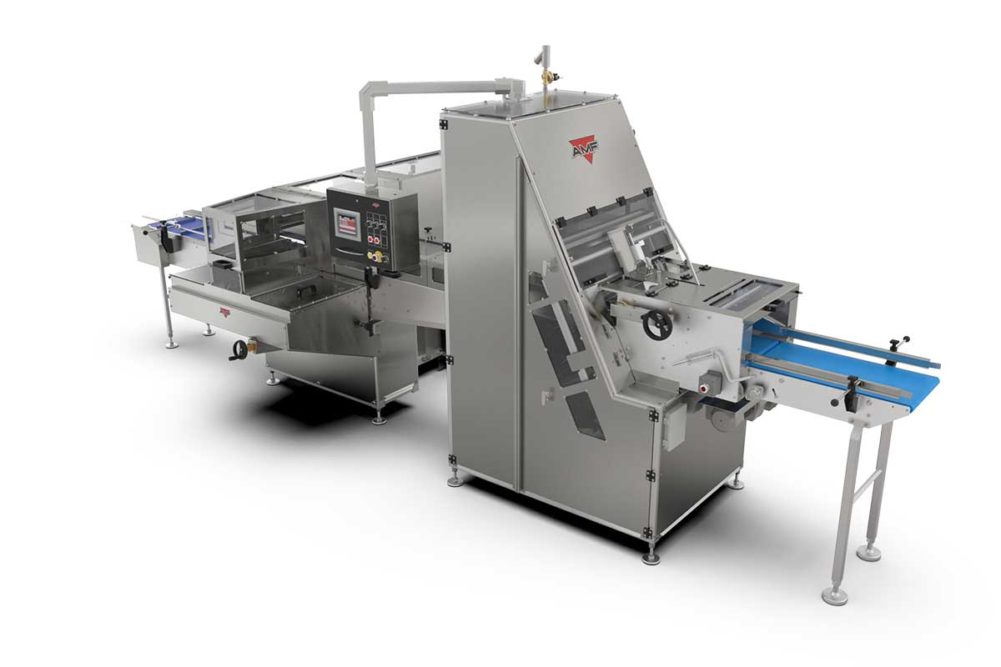Augmented and virtual reality (AR/VR) technology is being used to help service bakery packaging equipment and train operators, among other uses.
“We utilize AR in a variety of ways while supporting our customers, including troubleshooting directly with our end users or connecting technicians to subject matter experts to provide quicker, more cost-effective support,” said Daniel Bellingham, head of service for Mettler-Toledo product inspection. “We also use AR as part of our ongoing training efforts for our employees.”
JLS Automation relies on AR for remote support and recipe modifications.
“The technology allows us as OEMs to rapidly diagnose a problem and interact in real-time with the customer,” said Bill Stratford, director of aftermarket sales and service at JLS. “We can point out best practices to help them improve the overall operation of the machine and also point out potential problems that either exist and they don’t recognize, or something that may cause an issue in the future.”
This technology is also now commonly being used for factory acceptance tests (FATs). Virtual FATs were a rarity two years ago, said Dennis Gunnell, president, Formost Fuji.
“We probably had done one or two before COVID hit, but now it’s fairly regular,” he explained. “We’ve done the full gamut from putting a tablet up and using FaceTime to HoloLens glasses. We’ve had a customer send out their custom system that had a camera, headphones, everything.”
Although he stressed that in-person FATs are preferred, handling them digitally means that more people can be involved. PMMI has developed guidelines to help its members navigate virtual FATs. And Jorge Izquierdo, vice president of market development for PMMI, predicts that these tests may be handled differently in the future.
“Moving forward, companies may not be doing it entirely virtually,” he said. “Instead of sending five people to the factory acceptance test, maybe you send only two and then, instead of the other three joining virtually, you have 10 more who can join.”
The other advantage Mr. Izquierdo has seen is that these videos can be turned into training materials. Training is another way companies are taking advantage of these technologies. Not only can workers use goggles to train and troubleshoot virtually, companies use QR codes on equipment. They allow maintenance and other workers to scan the codes, which can take them to videos about set up and repair, walk them through repairs, provide parts lists and more.
“My goal is that someday they could come up, scan the QR code and pick a part if they had to replace one. And once they pick that part, an email would be automatically generated, and sent to Heat and Control to order that part and to assist the operator within minutes,” explained Chris Farver, director of controls and information, Heat and Control.
Mr. Gunnell predicted that we will see a lot more training applications for these technologies, and he sees a lot of opportunity for in-house training and recruitment.
“If I’m going out to a job fair, I can have one of these folks come to my booth, put on a set of goggles and see what’s going on in my factory and walk through my plant,” he said.
Alain Lemieux, product group leader, AMF Bakery Systems, said he sees plenty of places where these technologies will benefit bakeries in the future, including “AI tools that automatically analyze daily production runs and identify weak points, help managers fix issues, train personnel and optimize overall capacities.”
While all of this technology holds a lot of promise, it creates challenges for companies, especially for those that have not yet embraced it.
“The main barriers we see are understanding data, No. 1. Cybersecurity would be No. 2,” Mr. Izquierdo said.
He recommended that bakeries train their staff on these technologies and find a data partner that fits their needs since they likely will have a third party helping them process their data and identify potential problems and opportunities to optimize the process. He also said companies should ensure they have a strong security system in place to protect information and have a point person on staff who understands data and can turn the information into actions that benefit the business.
“That’s really the trick,” Mr. Izquierdo added. “How to look at all that information and get to the next level. It’s not about keeping your machines running, it’s about optimizing how they run.”
This article is an excerpt from the February 2022 issue of Baking & Snack. To read the entire feature on AR/VR/AI, click here.






